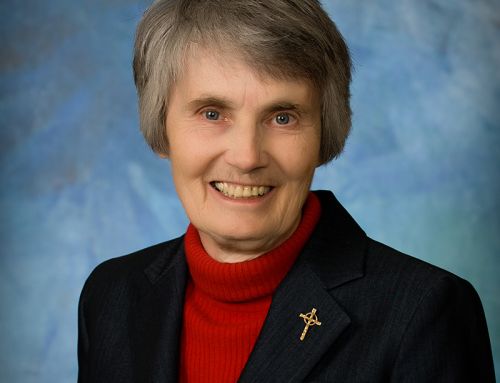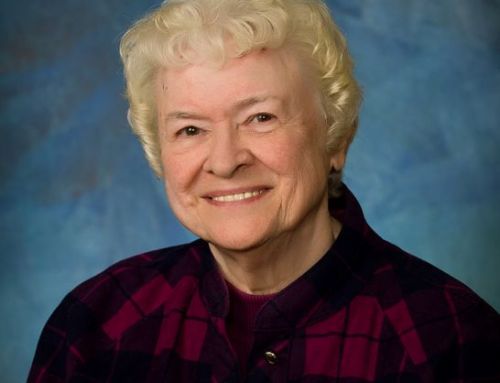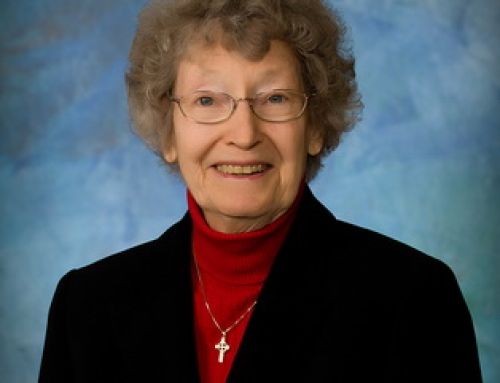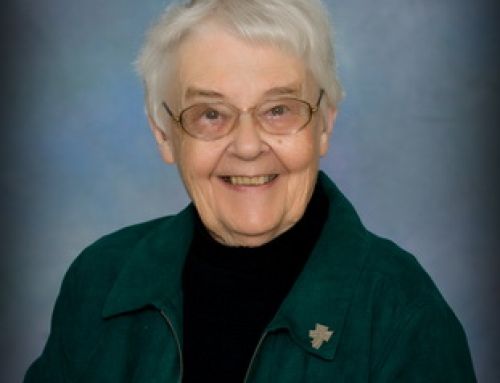“Human trafficking is a crime against humanity. We must unite our efforts to free victims and stop this crime that’s become ever more aggressive, that threatens not just individuals, but the foundational values of society.” – Pope Francis
National Slavery and Human Trafficking Prevention Month also called Human Trafficking Awareness month is acknowledged each year in January.
Human trafficking is the illegal buying and selling of human beings for commercial sexual exploitation or forced labor. It is a crime under both U.S. and international law. Second only to drugs, it is the fastest growing criminal enterprise in the world, generating approximately $150 billion dollars annually.
An estimated 40+ million people (including children) are trafficked worldwide, despite the fact that in every country, human trafficking is outlawed, sometimes the country is actually the trafficker. Sadly, the U.S. is one of the world’s largest markets for human trafficking.
Human trafficking, according to Unitas (https://www.unitas.ngo/), “is the exploitation of another person for labor, domestic servitude, or commercial sexual activity by force, fraud, or coercion. It is also the act of enslaving or exploiting unwilling other people.”
Unfortunately, slavery in some form has existed for hundreds of years – and persistently exists today. In 2000, the Trafficking Victims Protection Act addressed modern-day slavery, becoming the first federal law to do so. Today, there are over 50 established organizations that globally co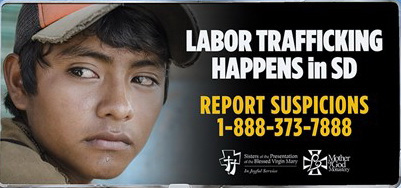 mbats this illegal practice, and more awareness has been raised than ever before. (excerpt above from https://nationaltoday.com/national-human-trafficking-awareness-day)
mbats this illegal practice, and more awareness has been raised than ever before. (excerpt above from https://nationaltoday.com/national-human-trafficking-awareness-day)
Labor Trafficking, a form of human trafficking, is the recruitment, harboring, transportation, provision or obtaining of a person for labor or services for the purpose of subjection of involuntary servitude, debt bondage or slavery.
While most are not guilty of keeping a trafficking victim in their home, many are involved in labor trafficking through the consumer route. Readily available items such as a cell phone or nice jewelry (gold, silver, platinum) or eating shrimp or chocolate candy, are items often made by labor-trafficked children and adults.
The Bureau of International Labor Affairs of the U.S. Dept. of Labor published a list of goods produced by child or forced labor. The list comprises 139 goods from 75 countries. The most common agricultural goods listed are cotton, sugarcane, coffee, cattle, rice, fish, and cocoa. Most common manufactured goods are bricks, garments, carpets, and footwear.
Labor trafficking is increasing in South Dakota, especially as it intersects with immigrants. Many migrants are not fluid in English, labor laws, or their rights, and are afraid of being deported. 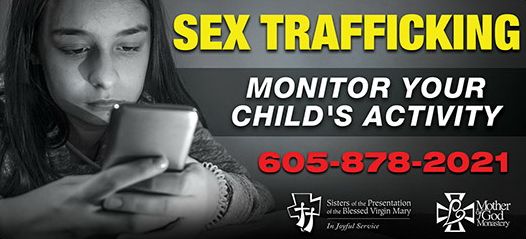
Sex Trafficking is the other most common form of trafficking. The reality of sex trafficking in South Dakota is undeniable; victims are trafficked in cities and rural communities, at casinos, truck stops, and over the internet. It has grown to epidemic proportions. The sex trafficking venues unique in South Dakota include the Sturgis Bike Rally, pheasant hunting season, and our Native American communities
Trafficking happens both in person and on the internet. Many may not be aware that trafficking is happening in local communities because we don’t know enough about it. Traffickers may not be walking around your neighborhood, but with a smartphone or a computer, they can be right inside your home.
Trafficking and technology through social media has become the platform for perpetrators to connect with and exploit youth; it happens through the internet. Both traffickers and johns use the internet to find potential victims. It’s important for parents, other family members, and those who care for children to be aware of the dangers as well as the signs to watch for. The Anti-Human Trafficking Newsletter focused their January issue on the grooming and recruitment of children through social media. The newsletter can help you learn more about both as well as how kids are recruited. Read the newsletter here.
The Internet and pornography are connected. The pornography epidemic is one of the drivers of trafficking. Today’s internet porn is more hardcore, graphic and violent that ever before. It’s more addictive than any drug; in fact, on-line porn is considered to be one of the top three fastest growing addictions in America. Research has found that the average age of exposure to pornography is 11 years of age. Demand for pornography is leading the demand for increasingly younger children to star in porn films, leading to increase in sex trafficking of minors. Sadly and shamefully, 55% of all pornography comes out of the U.S. More than half of the 4.5 million porn sites are in the U.S. and many of these sites offer free access. They are literally available to anyone using the internet.
What can we do to help with the problem of human trafficking? First of all, educate yourselves. Attend an educational event or work to bring one to your community. Go to some of the links in this article and seek information about what trafficking is, what signs to look for and what are the numbers in your state. Educate yourself and others about ethically made products such as slave-free coffee and chocolate, seafood, shoes and clothing, etc. Inform & educate the young people in your community. Don’t know what to say? The Diocese of St. Augustine’s website has a wealth of resources and an excellent video made by and for teens. www.dosafl.com The video – Human trafficking: How did I not know about this? https://www.youtube.com/watch?v=tF68m4sbh3k
Learn the National Trafficking Hotline number and know when to use it: 1-888-3737-888. Share it with others and call it or your local emergency number if you see a situation that may involve trafficking. Never put yourself in danger and intervene directly or try to save a victim – observe and report; if you see something, say something. Prevention is better than trying to rescue.
Pray; offer prayers for an end to human slavery. Pray for the victims, for the johns, for the traffickers. St. Josephine Bakhita is the patroness of survivors of human trafficking. To pray a novena to invoke her intercession for all those involved in human trafficking and for an end to this societal ill click on this link. An additional prayer resource can be found here. This daily prayer calendar begins on January 11th and ends on St. Bakhita’s Feast Day on February 8th.
The horrific injustice of human trafficking can affect people of any race and background, and we are all called to fight human trafficking wherever it exists. Learn more HERE.
